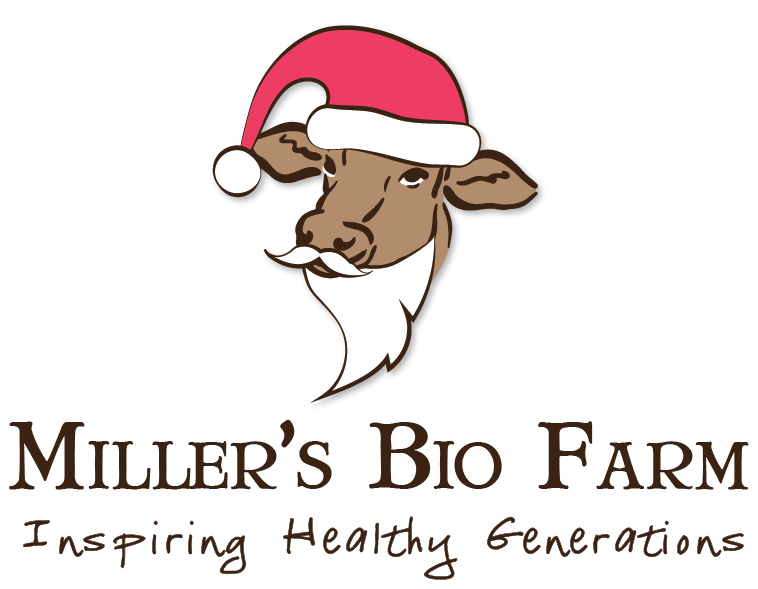Are there GMO non-food coatings on your fresh produce? Here's what you need to know.
posted on
June 21, 2024

*Originally published on 6/11/23. Last updated on 6/28/24.
In general, fruits and veggies are considered “healthy” foods. But, our complicated food system has, of course, complicated this.
You probably know that farming practices matter. Many herbicides and pesticides are used to grow produce, even organic produce (the list of chemicals that are approved for organic farming continues to grow and grow). Those chemicals can make their way into or onto your produce.
But, what about what’s added to your FRESH PRODUCE after it’s harvested? That’s right, coatings on fruits and vegetables have become commonplace.
Store bought fruits and vegetables (and I mean basically all of them, even leafy greens) are coated to improve appearance and extend shelf life. Coatings prevent the food from drying out and prevent fungi from growing. They make it look “perfect” for a long time.

Modern consumers simply will not buy or be satisfied with produce that has any imperfection or sign of age. And, just like you, stores don’t like throwing away products they purchased either.
On the one hand, coating produce is a good idea, since it helps reduce food waste. On the other hand, what’s in those coatings? Do the benefits outweigh the risks? Let’s learn a little more so you can make an educated decision.
Coating Ingredients (Non-Food)
Sure, I’m ok eating a little beeswax. In fact, I expect it when I eat RAW HONEY. It’s 100% natural. But, the coatings on produce are not simply natural waxes, they are mixtures of up to 50 different compounds. They are created in labs to be able to easily spray on and stay on. And, of course, they’re proprietary, meaning we don’t have the right to know exactly what’s in it.
Here’s a short list of some potential ingredients:
- Waxes (Carnauba, Candelia, wood rosin, etc)
- Shellac
- Esters (like sodium lauryl sulfate often used in soaps)
- Alcohols (heptacosanol, malol, etc)
- Hydrocarbons (triacontane, C30H62, etc)
- Plastics (like Polyethylene, the same plastic used to make disposable shopping bags)
- Glues (like Polyvinyl acetate)
- Emulsifiers (morpholine oleate, carrageenan, alginates, mono- and diglycerides, etc)
Many of the ingredients listed above are derived from GMO (AKA bioengineered) corn or petroleum.
This applies to certified organic produce, too. Here are 2 important USDA organic rules:
§ 205.605 - Nonagricultural (nonorganic) substances allowed as ingredients in or on processed products labeled as “organic” or “made with organic (specified ingredients or food group(s)).
§ 205.606 - Nonorganically produced agricultural products allowed as ingredients in or on processed products labeled as “organic.”
Cannot Wash Coatings Away
Most coatings on fresh produce cannot be washed away. They’re designed like this, because stores want the coating to stay on. You might be able to remove some, but not all.
Non-Food Overload
Listen, all of the coatings are USDA approved and are considered “GRAS” (generally recognized as safe). And they probably are… for the most part. But, what if a little additive or non-food ingredient was in all food that you consumed? Have the interactions of these ingredients been tested? Has the overall load of non-food ingredients been examined? Well, I haven’t found a study that looks at that.
New Apeel Coating
There’s a new coating for produce that is allowed in certified organic produce, and it’s called Apeel. It’s currently being used in at least 15 countries and cannot be washed off. There are a lot of concerns from real food advocates about its safety.
First off, it contains some alarming ingredients. FDA Papers about ‘Apeel’ show that it:
- Contains: Lead, Arsenic, Cadmium, Palladium, and Mercury
- Contains: Citric Acid which is almost always derived from GMO corn
- Contains: Soap, sodium oleate (yes, extra salt, sodium in your diet)
- Contains: Ethyl acetate, a flavoring agent, used in solvents, paints, lacquers, perfumes, and processed foods, which is toxic if ingested or inhaled
- Heptane: Used in test fuels, petroleum refinements, cements, and inks
- Contains: Toluene, a highly toxic chemical with a wide range of detrimental health effects when inhaled, swallowed, or when comes in contact with skin or eyes
Apeel-coated produce was quickly adopted in stores like Trader Joe’s, Whole Foods, Sprouts, Fairway Market, and Costco. The company secured partnerships with many large produce producers, too. Due to its miraculous abilities and “certified for organic” status, it’s catching on quickly and the lists keep growing!
*Since 2023, a few grocers have thankfully stopped using Apeel. Those include Trader Joe's and Sprouts.
How to Know if Produce is Coated
Coated produce is technically and generally required to be labeled in stores, although the laws change from state to state. The fruit may have a sticker or it may say it in the fine print on the sign on the bulk bin or the bag that it comes in. But, for the most part, it’s really hard to tell. Here are some things to look out for:

Where to Buy Uncoated Produce
To buy produce you know is uncoated you need to know the farmer or have a trusted source. Goodbye, mainstream supermarket! You can try the following sources:
- Farmers markets
- CSAs
- Small mom & pop grocery stores that source from reputable farms/coops
- Miller’s Bio Farm (we have SEASONAL PRODUCE that changes weekly)
At Miller's Bio Farm, you get foods containing only actual food as ingredients... and that means no coating on our produce ever! We source our produce from the Lancaster Farm Fresh Cooperative, and they know every farm they work with :)
—--
Sources




